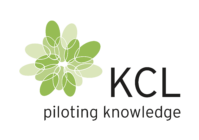Barrier coatings can be recycled, but the process and feasibility depend on the type of coating used. Recycling helps reduce waste and promotes sustainability in packaging materials. This article explores what barrier coatings are, their recyclability, the recycling process, and innovations improving their eco-friendliness.
What is barrier coating and why is it used?
Barrier coating refers to a layer applied to materials, primarily packaging, to enhance their functional properties. It serves as a protective shield against moisture, gases, and other environmental factors that can compromise the integrity of the packaged product. Commonly used in food packaging, barrier coatings preserve freshness and extend shelf life.
These coatings are essential in various industries beyond food, including pharmaceuticals and electronics, where maintaining product quality is crucial. They help in creating eco-friendly packaging solutions by reducing the need for additional materials, thereby minimizing resource consumption.
Are all barrier coatings recyclable?
Not all barrier coatings are created equal when it comes to recyclability. Some are designed with recyclability in mind, using materials that can be easily separated and processed. For instance, water-based coatings often have a higher recyclability rate compared to solvent-based ones.
The challenge lies in the composition of the coating. Coatings made from mixed materials or those that are heavily bonded with the substrate can be difficult to separate, thus complicating the recycling process. However, advances in technology are continuously improving the recyclability of various types of barrier coatings.
How does the recycling process for barrier coatings work?
The recycling process for barrier coatings typically involves separating the coating from the substrate material. This can be achieved through mechanical or chemical processes. The separated materials are then processed and repurposed for new applications.
Challenges in this process include the energy cost of separation and the potential for contamination. Successful recycling often requires advanced sorting and processing technologies to ensure that the materials are clean and suitable for reuse.
What are the environmental benefits of recycling barrier coatings?
Recycling barrier coatings significantly reduces waste and conserves natural resources. By reusing materials, we decrease the need for virgin resources, thereby minimizing environmental degradation and promoting sustainability.
Additionally, recycling helps reduce the carbon footprint associated with the production of new materials. It also alleviates the pressure on landfills, leading to a more sustainable waste management system and supporting eco-friendly packaging solutions.
What innovations are improving the recyclability of barrier coatings?
Recent innovations have focused on developing biodegradable and compostable barrier coatings. These materials break down more easily in the environment, reducing the ecological impact of packaging waste.
Furthermore, advancements in coating technologies, such as the use of bio-based materials and improved separation techniques, are enhancing the recyclability of barrier coatings. These innovations are crucial for promoting a circular economy and achieving sustainability goals.
Conclusion
The recyclability of barrier coatings is a complex issue with significant environmental implications. While not all coatings are recyclable, ongoing innovations are improving their eco-friendliness. By prioritizing sustainable practices and embracing new technologies, we can make strides toward a more sustainable bioeconomy.
